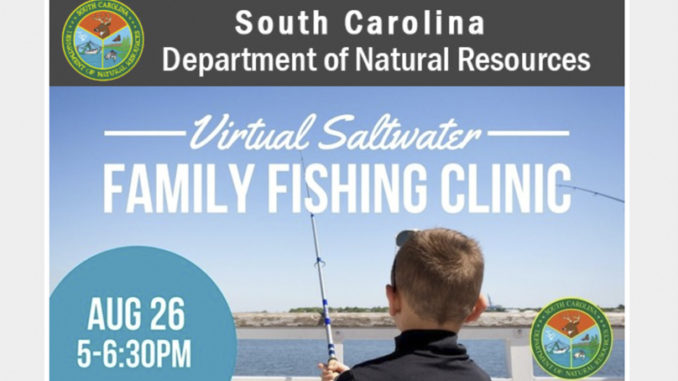
Clinic is free, but requires registration
The SCDNR is holding a hands-on, virtual saltwater family fishing clinic on Aug. 26. The course runs from 5 p.m. to 6:30 p.m. The clinic is free, but a member of each participating family must RSVP and complete an application through Eventbrite.
This clinic will teach basic skills such as how to tie fishing knots, how to rig a rod and reel, casting, and the general basics of how to fish.
In this hands-on clinic, participants will be using some basic tackle supplies, as shown below. Feel free to supply this tackle on your own, or you may pick up the necessary tackle from SCDNR’s Charleston office.
Tackle pickup is Aug. 18 through Aug. 21. Participants can drop the tackle off between Aug. 31 and Sept. 3.
Click here to register.
Basic tackle list:
Fishing line: It is better to practice with thicker line such as 20-pound test monofilament line. Alternatives include fluorocarbon and braided fishing line.
Nail clippers: Nail clippers are an inexpensive and safe resource for cutting off excess line. Alternatives include scissors or pliers. Always properly discard line.
Fishing hook: An in-line non-stainless tell circle hook (size 1/0) is recommended for beginning anglers. Keep in mind the size of the fish’s mouth you are after.
Splitshot: No. 5 splitshot is a great fishing weight for beginners. Popular alternatives include bank, egg, bell, pyramid, and bullet weights.
Popping cork: This cork is used to attract the fish’s attention. It produces a clicking sound and upon jerking the rod tip, the movement resembles fleeing bait.
Other required materials:
Egg sinker: Size 1/2-ounce to 1-ounce egg sinkers are also a great fishing weight for beginners. the egg sinker is often used in a rig for fishing at or near the bottom.
Plastic bead: Beads are a great way to add some attention to your line. They come in a variety of sizes and materials, like plastic, brass, and even glass.
Swivel: Swivels allow the line to untwist during line retrieval, preventing tangling. The line from the reel is tied to one end, and the leader to the other.
Casting plug: The casting plug is used as a weight to practice casting. Alternatives include a cork with an eye screw, a bullet weight, or a wooden dowel.
Practice hook: Practice hooks can be made by cutting off the point of a regular hook. You can also bend a wire hanger and use a shoelace or paracord.
Spinning rod and reel: Spinning reels are a great transition from the spincast reel as they cast farther. The line spools off quickly and the reel can be used for lighter lures.
Click here to register for this clinic.
Happy fishing!

Be the first to comment